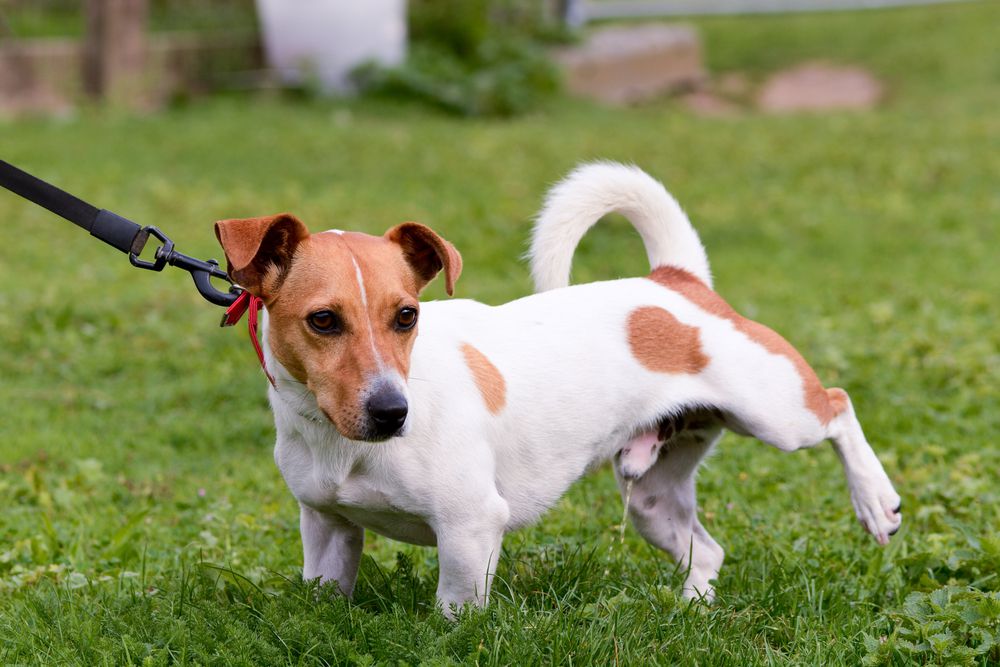
Dog urine contains various compounds, including urea and certain salts, which can cause grass to turn yellow or brown. The phenomenon of yellowing grass due to dog urine is commonly known as "dog spots" or "urine burn." Several factors contribute to this discoloration, including the concentration of urine, the size of the dog, the dog's diet, and the condition of the grass.
One of the main components in dog urine that leads to yellowing grass is urea. Urea is a nitrogen-rich waste product that is excreted in urine. When dogs urinate on grass, the high concentration of urea can have a fertilizing effect in small quantities. However, when the urine is concentrated or deposited in one spot, the high levels of nitrogen can overwhelm the grass and cause damage. The excess nitrogen dehydrates the grass and disrupts its natural balance, leading to yellow or brown patches.
In addition to urea, dog urine also contains salts, such as sodium and chloride. These salts can further contribute to grass damage. When the urine evaporates or is absorbed by the soil, the salts are left behind. Over time, the accumulation of salts in the affected area can increase the soil's salinity. Excessive salt levels in the soil make it difficult for grass roots to absorb water, leading to dehydration and yellowing of the grass.
The size of the dog also plays a role in the severity of urine burn. Larger dogs tend to produce more urine, which means a higher concentration of nitrogen and salts in a single spot. Consequently, their urine can have a more pronounced impact on grass health compared to smaller dogs.
Dietary factors also contribute to the composition of dog urine and its effect on grass. A dog's diet influences the levels of nitrogen and other compounds in their urine. Diets rich in protein can result in higher nitrogen concentrations in the urine. Additionally, certain food additives or supplements may alter the urine's composition, potentially affecting the grass.
The condition of the grass itself can also influence its susceptibility to urine burn. Weaker or stressed grass is more prone to damage from dog urine. Drought conditions, poor soil health, or insufficient maintenance can weaken the grass, making it less resilient to the concentrated nitrogen and salts in the urine.
To mitigate the effects of dog urine on grass, there are a few measures that can be taken. One approach is to dilute the urine by immediately watering the area where the dog has urinated. This helps to disperse and dilute the nitrogen and salts, reducing their concentration. Another strategy is to train the dog to urinate in specific areas, such as a designated gravel or mulch spot, rather than on the grass itself. Providing ample opportunities for the dog to urinate in appropriate locations can minimize the damage to the lawn.
In conclusion, the yellowing or browning of grass due to dog urine is primarily caused by the high concentration of nitrogen, salts, and other compounds present in the urine. Factors such as urine concentration, dog size, diet, and grass condition contribute to the severity of the damage. By understanding these factors and implementing appropriate measures, it is possible to mitigate the effects of dog urine on grass and maintain a healthy lawn.
